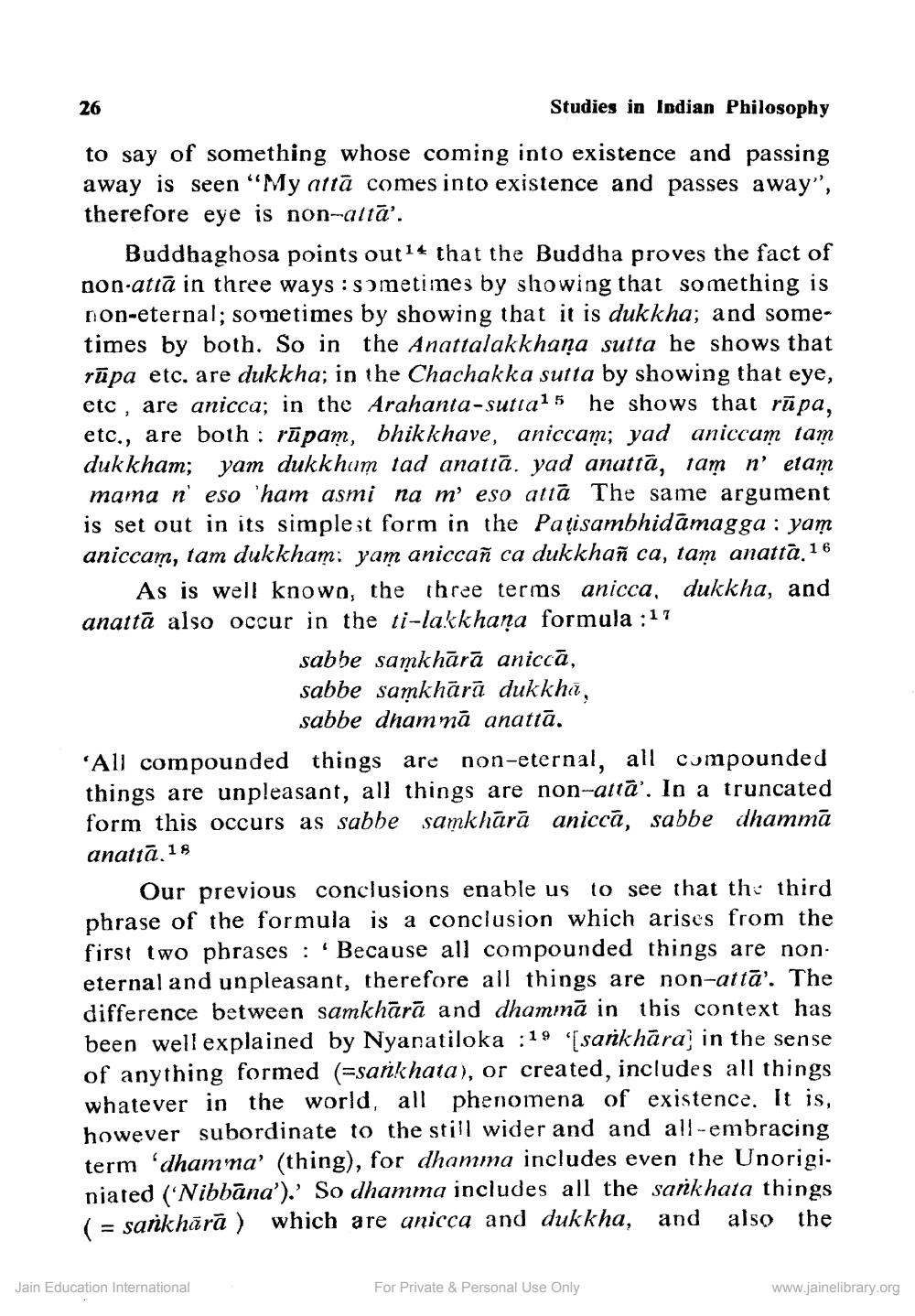________________
26
Studies in Indian Philosophy
to say of something whose coming into existence and passing away is seen "My attā comes into existence and passes away”, therefore eye is non-attā.
Buddhaghosa points out14 that the Buddha proves the fact of non-atta in three ways: sɔmetimes by showing that something is non-eternal; sometimes by showing that it is dukkha; and sometimes by both. So in the Anattalakkhana sutta he shows that rūpa etc. are dukkha; in the Chachakka sutta by showing that eye, etc, are anicca; in the Arahanta-suttal5 he shows that rūpa, etc., are both : rūpam, bhikkhave, aniccam; yad aniccum tam dukkham; yam dukkhum tad anattā. yad anuttā, tam n'etam mama n' eso 'ham asmi na meso attā The same argument is set out in its simplest form in the Pațisambhidāmagga : yam aniccam, tam dukkham: yam aniccam ca dukkhaũ ca, tam anatta 16
As is well known, the three terms anicca, dukkha, and anattā also occur in the ti-lakkhaņa formula :17
sabbe samkhārā aniccā, sabbe samkhārā dukkha,
sabbe dhammā anattā. 'All compounded things are non-eternal, all compounded things are unpleasant, all things are non-attâ'. In a truncated form this occurs as sabbe samkhārā aniccā, sabbe dhammā anattā.18
Our previous conclusions enable us to see that the third phrase of the formula is a conclusion which arises from the first two phrases : 'Because all compounded things are noneternal and unpleasant, therefore all things are non-attā'. The difference between samkhārā and dhammā in this context has been well explained by Nyanatiloka :19 "(sarkhāra; in the sense of anything formed (=sankhata), or created, includes all things whatever in the world, all phenomena of existence. It is, however subordinate to the still wider and and all-embracing term 'dhamma' (thing), for dhamma includes even the Unorigi. niated ('Nibbāna').' So dhamma includes all the sarkhata things ( = sarkhārā ) which are anicca and dukkha, and also the
Jain Education International
For Private & Personal Use Only
www.jainelibrary.org




